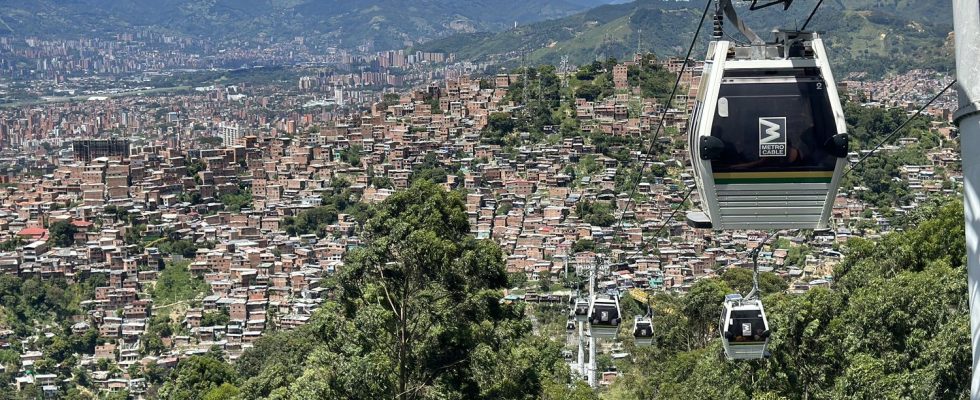Thirty years to the day after the death of the famous drug trafficker Pablo Escobar, on December 2, 1993, fell under the bullets of the Colombian army, the metropolis in the west of the country went from the status of murder capital to that of a city trendy and trendy, paradise for tourists and digital nomads, as this Frenchman testifies.
Published
Update
Reading time: 2 min

For a long time, Medellín was best known as the base of notorious drug lord Pablo Escobar, but since the late 2000s, the city has become a fashionable destination, and even the darling of tourists and expats. Thomas Espeute has lived in Medellín for four years. With another Frenchman, he put together a travel guide on the Internet. At 34, he admits that you don’t walk here in the evening without some precautions…

“They have a saying in Colombia, which we learn very quickly, it’s “No dar papaya”, papaya is a fruit that they like to eat, papaya. Basically, it’s not giving the stick to get beaten, don’t cause bad luck. You shouldn’t walk around with your phone in your hand, showing everyone that you have the latest iPhone, you have to be a little more on the lookout.”

And if Escobar has disappeared, the myth remains very much alive, no offense to the town hall of Medellín. It attracts thousands of tourists every year.

“Pablo Escobar is intriguing. He has a pretty incredible story. For example, visitors want to see the house where he died. On the other hand, the city of Medellín hides it. There isn’t even a sign on the roof of the house. house where he was killed. They’re not trying to highlight it.”

This explosion in the number of new arrivals since the Covid-19 pandemic in Medellín has led to the emergence of restaurants, luxury boutiques and guided tours. In addition to tourists, the city attracts many expatriates, so much so that Medellín is now spoken of as the third destination in Latin America to live, just after Buenos Aires and Mexico City.
“It can be hot during the day, testifies Thomas Espeute, but after the evening, with a little sweater, it’s super pleasant. That, plus the nightlife, you quickly feel good there.”

Foreigners benefit from strong purchasing power, which causes unprecedented tension in real estate. Result : accommodation, previously offered year-round, is now available on temporary rental platforms like Airbnb, where the number of ads in Medellín has jumped 45% in one year.

“Rent in Medellín, for a two-bedroom apartment, in a good area, will easily cost two million pesos, about 500 euros, observes the Frenchman, knowing that the minimum wage in Colombia is 200 euros, it’s like paying 2,500 euros for an apartment in Paris.”

Go further
Their online travel guide
Find this column on the app, the website and in the international mobility magazine “Français à l’avenir.fr”
